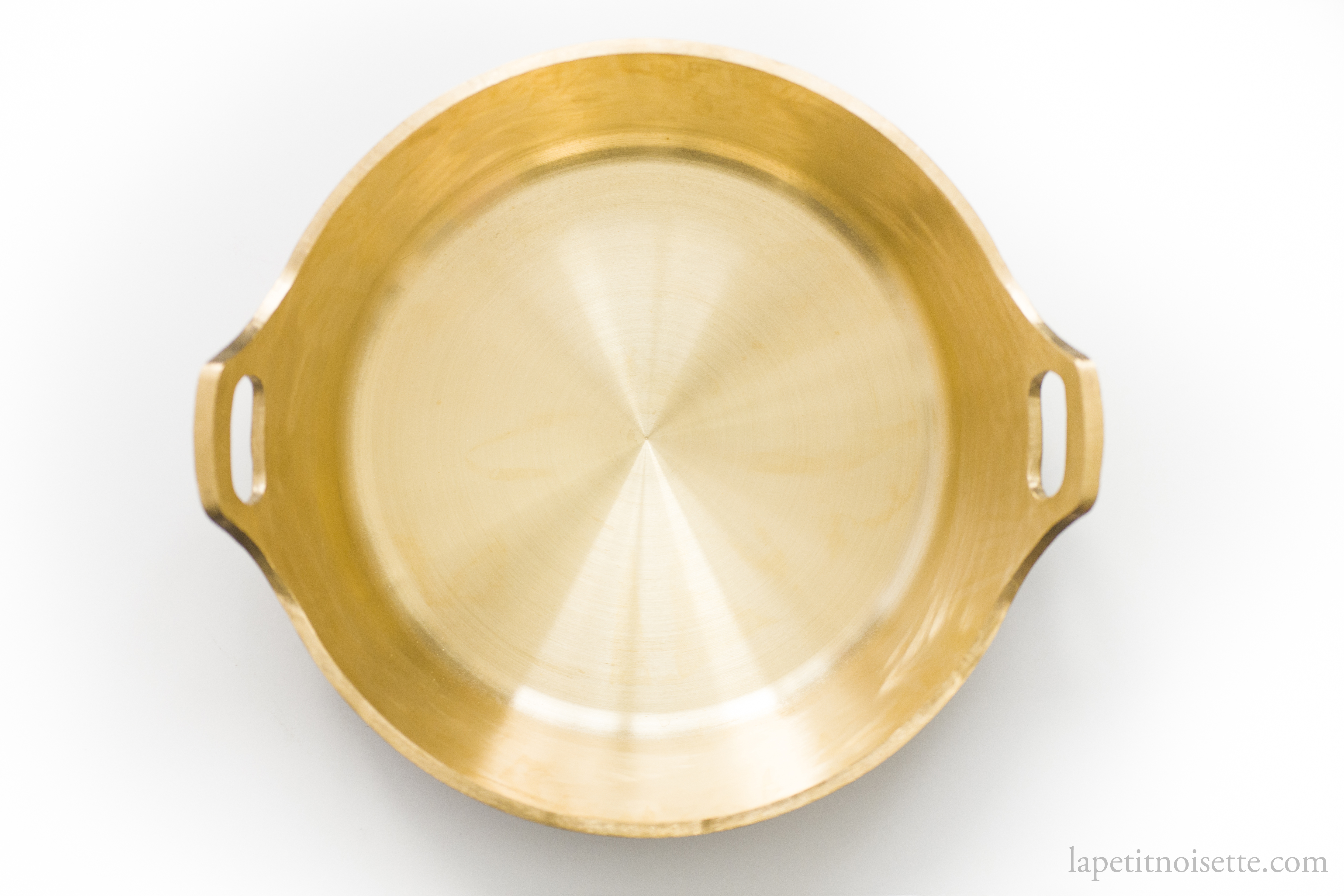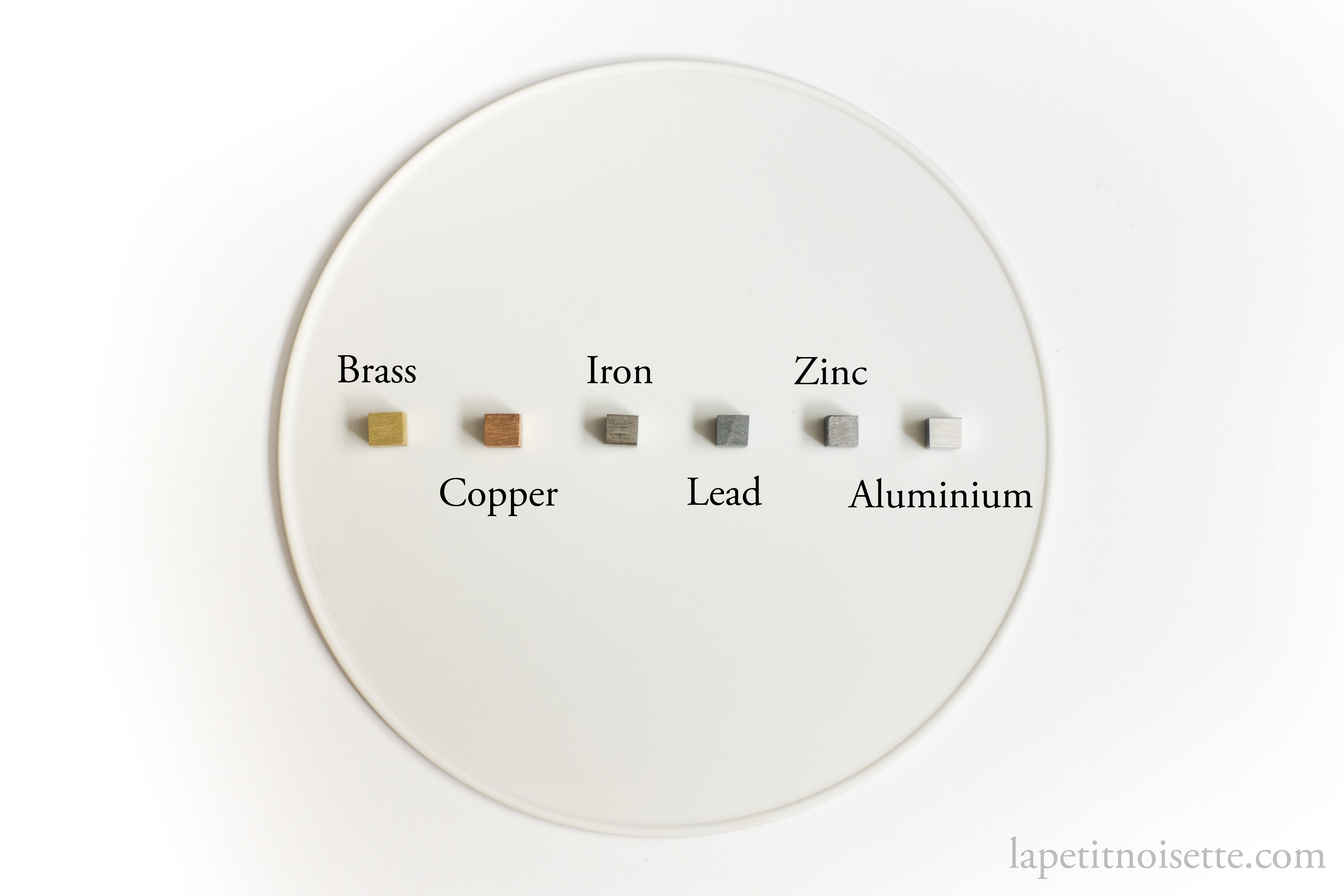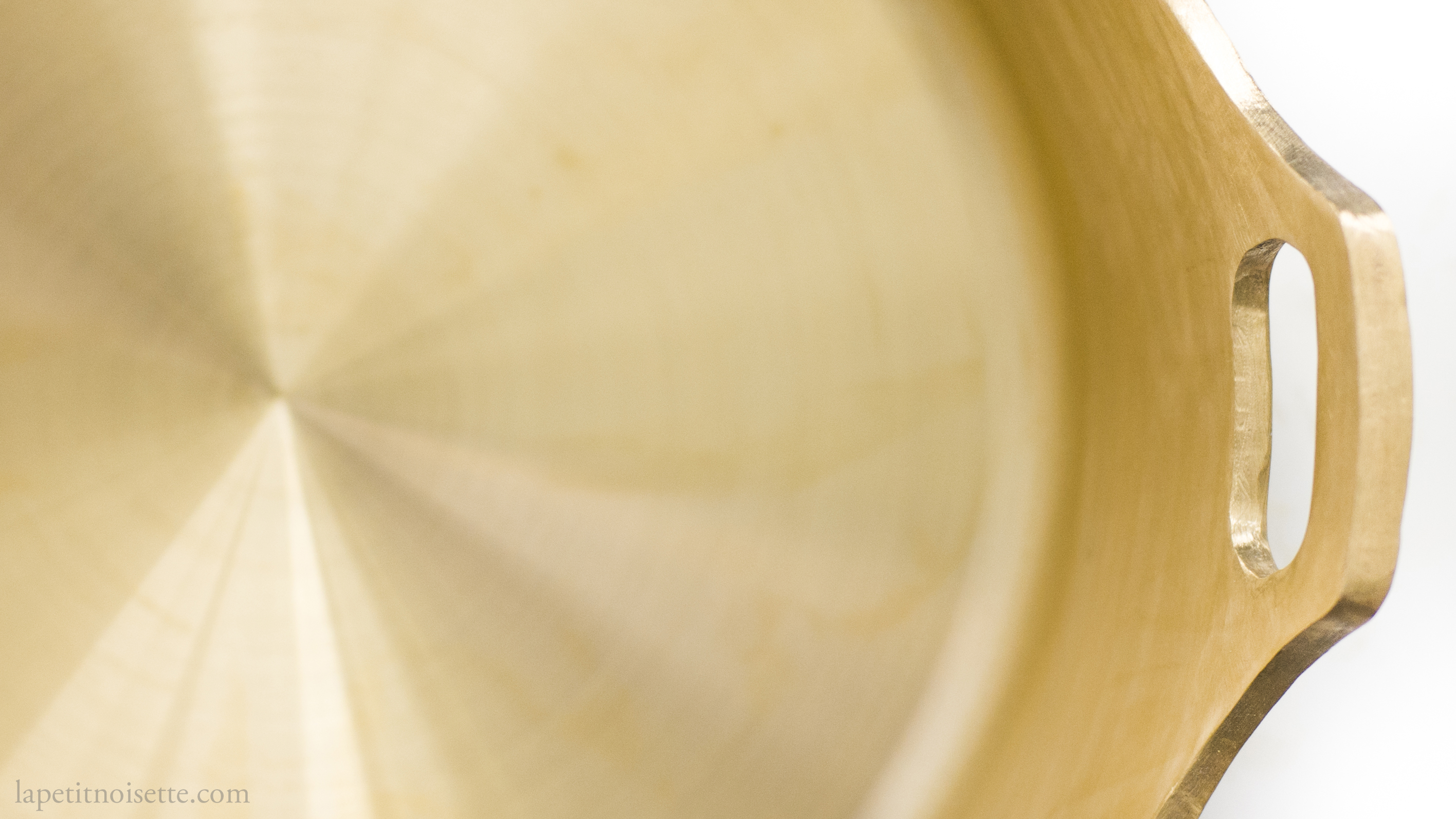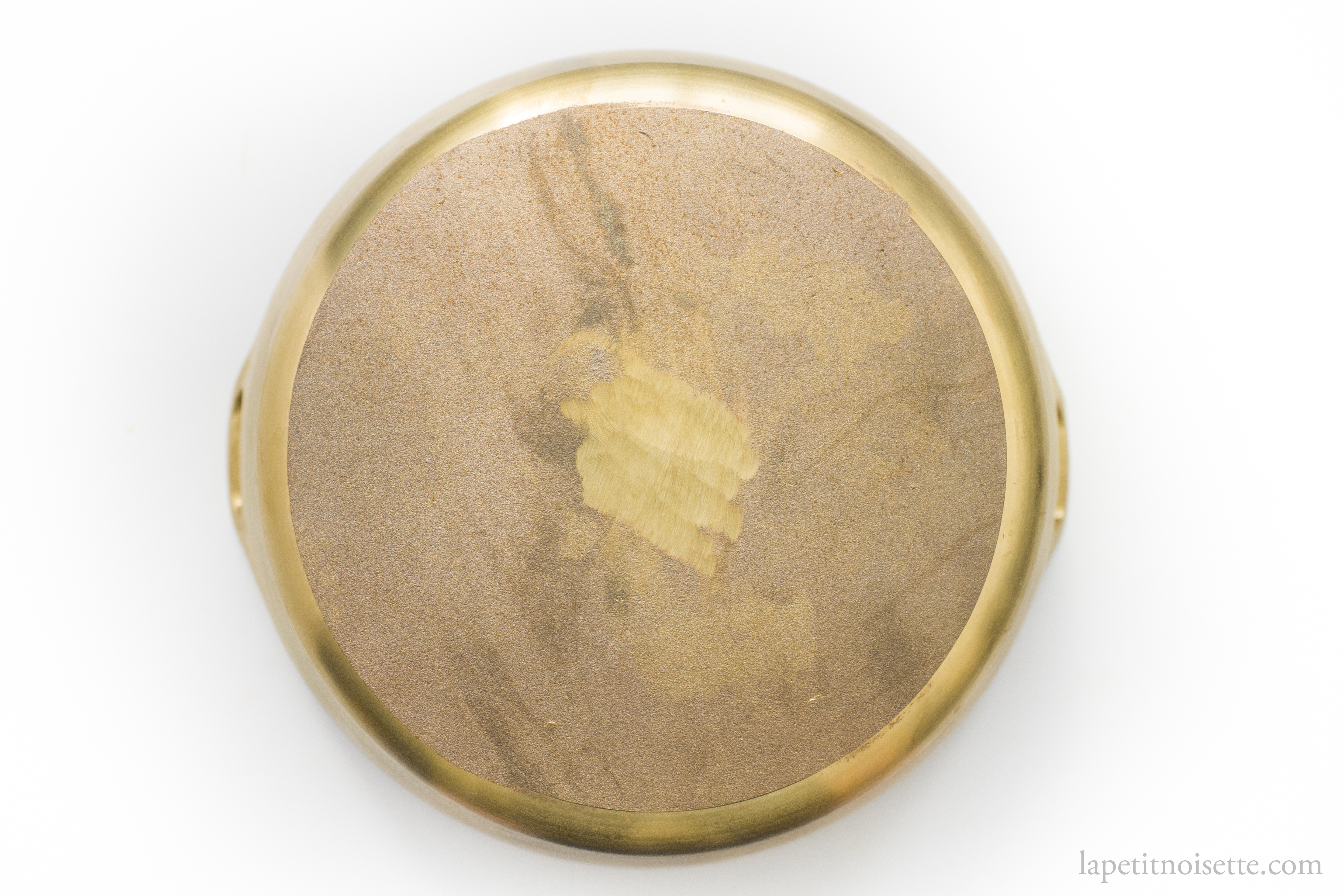
The world of deep-frying in the western world is dominated by specialist stainless steel deep-fryers where food is typically added into oil before being fished out using a frying basket. You’d rarely ever see people deep frying the old fashion way, with a pot of oil over a stove, though you do occasionally see people swear by their deep fried chicken in enamel cast-iron pots, but usually over an induction cooker. In Japan however, it’s still very common to find food deep fried in a pot of oil over a gas fire stove. This is especially so in higher end restaurants that pride themselves on perfectly fried food. Your typical high end tempura establishment will usually feature a large copper pot over a gas fire, with fried food being fished out skillfully using a pair of chopsticks. Excess batter is fished out using a sieve and you’ll see no thermometer in sight.
They train to judge the temperature of the oil through the size of the bubbles that erupt from the batter and how vigorously it fries. To them, nothing can beat the temperature control of a gas fire. This also explains why most of them use pure copper pots. Second only to silver in thermal conductivity, copper is one of the best materials to give you perfect temperature control over your deep frying. While I do disagree with quite a few of these traditional approaches (using a thermometer is a no brainer to me), I’ve always had an appreciation for old cooking equipment and today, I wanted to explore the pot that used to be the gold standard when it came to frying tempura and how that has changed over time. But first, let’s take a look at various kinds of cooking materials and metals.
When it comes to the most famous materials used to make cookware, you’ve always got the same kinds that come up over and over again: cast iron, copper, stainless steel, aluminium and carbon steel. Each one has its own pros and cons when it comes to cooking. You’ve got the die hard cast-iron fan base that swear by its durability, heat retention and the ability to add serious colour to any sear, with the downsides being its hefty weight and tendency to rust if not seasoned appropriately. You also have the traditionalists who swear by the superior thermal conductivity of copper, allowing for optimal temperature control and even heating, thus allowing it to become the metal of choice for the most prestigious french kitchens. The downsides here were the low melting point of their tin lining which required them to be relined as the tin wore off. Keeping a low profile, you’ve got carbon steel, used in the same way as cast-iron but mainly in restaurants and without the cult following, and of course, you have the everyday casual home cook looking for durable, cheap, light and good cookware, which is where stainless steel, aluminium and non-stick come in. But even in the world of cookware you have people constantly innovating and tweaking, from the massive following of american all clad which proponents claim to be superior to copper, to custom made solid silver cookware which cost a fortune.

In this site, I’ve written extensively on deep frying, from the science of frying tempura to low temperature tonkatsu frying. Throughout all this reading and experimenting, I kept hearing about this mythical tempura pot that none could compare against in terms of deep frying. It was even more highly regarded and coveted compared to pure copper tempura pots (純銅天ぷら鍋). When I first found one, my eyes almost fell out of my head when I saw the price- 300,000 yen. Its shiny golden colour accompanied by the kanji ‘金’ for gold in the label made me think this was some kind of gold plated tempura pot. Upon further research, it turns out that it wasn’t gold plated but was made from gunmetal (砲金), a gold coloured alloy of copper. As I delved deeper, I learned that gunmetal used to be the go to material for tempura frying pots many years ago in Japan. From what I gathered, this was wayyyy back when gunmetal was still used to make guns (hence the name) but as the material used to make guns shifted away from gunmetal, the supply of gunmetal dried up and the companies that manufacture it have all but wound up. In a way this was similar to natural Japanese sharpening stones in that most of the mines have closed and the only stock available to buy now are what remains in the warehouses. Mirroring that, the current gunmetal tempura pots that are available to be purchased currently are the remaining stock left in warehouses unless you’re lucky to buy one from the secondhand auction market. This lead to several questions that I’ll try to answer here:
- What is gunmetal
- Is it safe to use?
- Where can I source one?
- Is its price justified?
- Does it make better tempura?
What is gunmetal?
An alloy is basically a mixture of two or more metals. Gunmetal is the name of a copper alloy made with copper, zinc and tin that was used to make guns and cannons, hence the name gunmetal. When it comes to copper alloys, the most famous is definitely brass, used to make many musical instruments or sometimes found as the handle for copper pots. Brass is made from copper and zinc. Bronze is also another term that comes to mind when you think of copper alloys and is usually the name given for an alloy of copper and tin. From my basic knowledge, bronze is actually the term for any copper alloy that isn’t copper plus zinc alone so given that gunmetal is copper, zinc and tin together, gunmetal can be classified as a kind of bronze.
Is it safe to use?
My first instinctive reaction when I hear about extremely old metal cookware is: does it contain any lead? Lead is extremely poisonous to humans and can cause brain and kidney damage even in small amounts. While extremely uncommon now, lead was sometimes used in ceramic and glazed kitchenware, teapots and pots/pans in the old days. This was despite the fact that the knowledge of lead poisoning was around for thousands of years. Even today you sometimes hear news of lead contamination in water sources around the world. Even for the term gunmetal, you’d occasionally find references to recipes that call for copper, tin, zinc and lead, so I was extremely cautious to ensure that the gunmetal used to make the pots do not contain lead. Luckily enough, they’re well aware of the dangers of lead and the gunmetal formula they use is 86 to 90% copper, 7 to 9% tin, and 3 to 5% zinc. I was also well aware of the ideas floating around the possibility of copper or zinc leaching into food but my judgement is that so long as the pot is only used for frying tempura and thus is mainly used to heat oil, there should be no danger of this happening. So long as the pot isn’t used to cook acidic food or is scratched in any way, there is basically no risk of harm here. This is why pure copper in french cooking is only used in pastry applications to melt sugar, make caramel or beat egg whites, where there is no contact with acid which will corrode the copper.

Where can I source one?
If you do some looking around, almost all of the gunmetal tempura pots that you can buy are the remaining warehouse stock of one company, Hira Foundry (平井鋳造所). They’re easily recognisable by the ‘平’ stamp at the bottom of their pots. They’re also characterised by having a non-polished bottom so that it doesn’t slide around on the stove and occasionally with three legs attached to the pot. This is rather unusual as modern day tempura pots all have a smooth bottom with no legs. You’d be hard pressed to find any kind of cooking pot or pan with legs nowadays anyway, which probably goes to show how old this fashion of pots is. You’ll also find that first hand pots you can purchase are above 40cm in diameter as the remaining stock available for purchase are for restaurant use, while sizes more suitable for home use can only be bought on the secondhand market. I personally find 26 to 33cm ideal for home use.
If you’ve heard of the pilgrimage site for cooking aficionados in Tokyo, the famous Kappabashi street, you’ll be interested to know that Osaka has one just as similar called Doguyasuji Arcade. There, a shop named Wada Kitchen (株式会社和田厨房道具) started a revival project to revive the production of gunmetal tempura pots. According to them, during the revival project, they realised how expensive it’d be due to the increasing cost of raw materials, as well as the cost of manufacturing the alloy. They even tried contacting the workshops that used to manufacture the pots to obtain their old moulds but were unable to obtain any. In the end, they managed to find a craftsman and factory willing to carry out the process with the knowledge they had gathered to finally kick start the project. Sadly, the need to keep production cost at a minimum for such an ambitious project meant that only one size could be manufactured, which was the 39cm pot. I wanted to support this revival project and brought my gunmetal tempura pot from there even though 39cm is slightly larger than I’d like. As of writing there is still stock of this pot available in the wada kitchen store and online so hopefully by the time you’re reading this you’ll still be able to buy one if you desire.
Is the price justified/is it worth it?
Let’s talk about something that completely surprised me when I first started looking into these pots. They’re very heavy, like seriously heavy. To explain, let’s digress a bit. Traditional French copper pots are famous for being heavy due to being made from a copper thickness of 2.5mm and above. If you ever talk to a copper cookware enthusiast, you’ll find out that most modern day copper cookwares are not worth it because they’re only 2mm or even 1mm (typically less) in thickness. This has two implications, first, they’re ripping you off for the money you pay for the quality of the pan you’re buying, and secondly, the thermal conductivity of copper pan depends on their thickness. If you have a thin layer of copper bound to a layer of steel/tin, your pan won’t heat evenly as the layer of steel won’t be heated evenly in the first place because the copper is too thin to make a difference. There’s plenty of marketing going around talking about lightweight user-friendly copper pans, but they’re just ripping you off. If you want the benefits of copper, you’ll need a thick enough layer and it’s gonna be heavy. It’s why mauviel, the biggest manufacturer of french copper pots, has the M150 range and M250 range. In my personal view, the M150 range that makes 1.5mm copper pots is only worth it as long as their tin lined. If you buy a stainless steel lined 1.5mm copper pot, the copper won’t be thick enough to be effective. Meanwhile, the M250 range, with pots of at least 2.5mm of copper, are for the traditionalist who want proper even heating with the trade off of being heavy.
In comparison, the traditional gunmetal tempura pots made by Hira foundry are at a whooping 7mm in thickness, and the one manufactured in the revival process is an even crazier 8mm in thickness. These kinds of thicknesses in pots and pans in the modern world are literally unheard of, no matter the material, let alone copper. Bear in mind that copper is the most expensive material compared to metals used to make cookware. If you look at the price of a 2mm thick 40cm wide Mauviel stockpot, that goes for around 2000 dollars. The price for the revival project 8mm thick 39cm wide gunmetal tempura pot goes for around 1000 dollars and is a crazy 12.5kg in weight. Even if you say that the Maviel stockpot is taller than the tempura pot whilst also being made from pure copper, the tempura gun metal pot is still at least 3 times thicker. Therefore, even if you conservatively argue that they both have the same amount of copper, it’s still half the price. In that regard, even though 1000 dollars is a lot of money, you can see it as a similar investment as buying a copper pot.

The hypothesised justification for buying the pot (pre-testing)
The way in which this pot heats is really interesting, and you can see it by comparison. If you have a thick cast iron pot, the pot is slow to heat up, and whilst it was heating up, it would heat unevenly. But once heated up and taken away from the heat source, it takes a long time to cool down. If you have a 2.5mm copper pot, the pot would heat up quickly and evenly, and once taken away from the heat source, would cool down instantly. This pot is interesting because it doesn’t heat up as quickly as a standard copper pot because of how thick it is, but heats up much faster than a cast iron pot because it’s still made of an alloy of copper. Once it reaches the desired temperature, because of how thick the gunmetal is, it remains hot for a long time because it can store so much heat. This is advantageous because adding food to the pot doesn’t lower the oil temperature as much. All in all, it seems like this pot is trying to bridge the best of two worlds, cast-iron and copper. By being extremely thick, the oil temperature doesn’t drop as easily compared to a standard copper pot, whilst also heating up faster compared to a cast-iron pot. The thing is, by making it so thick that it can retain heat, you’re losing some of the properties that make copper so desirable, which is the ability to heat up and cool down quickly. However, given that you’re not pan frying food, you don’t need the pan to cool quickly, as once the food is cooked it is fished out of the oil. Having it heat up quickly is also always a plus.
Does it make better tempura? (post-testing)
After numerous rounds of testing, there was one major advantage of this pot compared to the others, which is the evenness of oil temperature at higher temperatures throughout the entire pot. Tempura pots are designed to be wide and shallow on purpose. This helps because food you fry is usually thin and if you want the batter to ‘bloom’ then you’d want a lot of space between each piece of tempura when frying. The main issue this causes is that tempura pots are typically much wider compared to the burner underneath and so the heating is focused on the centre of the pot and does not spread evenly towards the outer edges. This is especially for commercial sized tempura pots above 33cm. To solve this, tempura pots tend to be made from aluminium or copper which heats evenly. These materials introduce a different problem for restaurant sized tempura pots however, which is that the oil temperature also drops as you add food in due to the low thermal mass of these metals. Again to solve this problem, you’d want a high thermal mass metal for your pot- cast iron. However, cast iron is infamous for heating extremely unevenly and so a restaurant sized cast iron tempura pot will take forever to and maybe never heat evenly. Basically, the properties that one metal has that addresses another metal deficiencies causes it to have the deficiencies that the other metal’s deficiencies solve. This pot by-passes it by having a high thermal conductivity (copper alloy) and high thermal mass (thickness). The trade off that is made here is that it cools very very slowly but this just so happens doesn’t matter when frying tempura as the food is simply fished out of the oil.
Does the even heating of oil help you make better tempura? The answer is analogous to whether or not a more expensive racket lets you play sports better. If you’re just starting out and learning the sport, the skills and techniques associated with the sport are much more important to learn compared to buying expensive equipment. When you do reach a certain skill level and you can feel the slight nuances between different grades of sports equipment, then it pays to invest in better equipment as you’re trying to refine your game so much that minute changes can have a huge impact overall. The same applies here, unless you are in a relentless chase for the perfect tempura and are constantly trying frying batches of food over and over again to obtain a specific style of tempura, this pot probably won’t make any meaningful different to you other than be a huge hassle due to the weight and amount of oil it needs. As proof of this, even the most famous tempura chef Shuji Niitome uses an aluminium tempura pot.